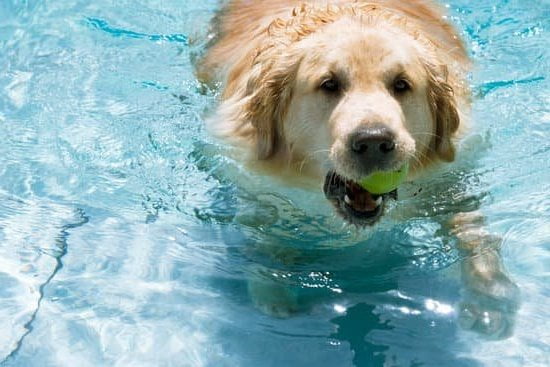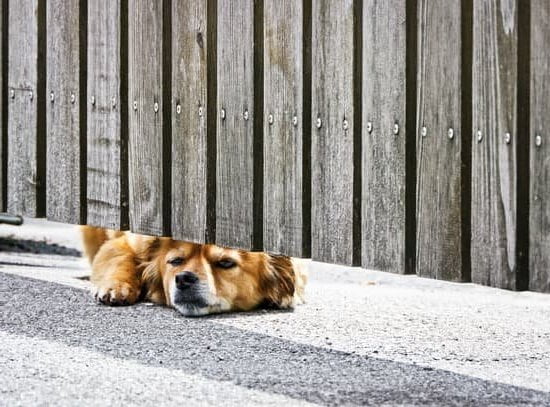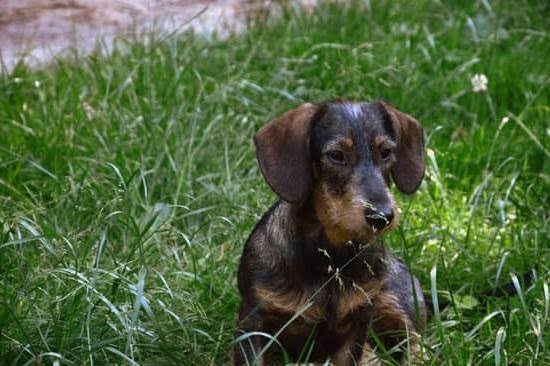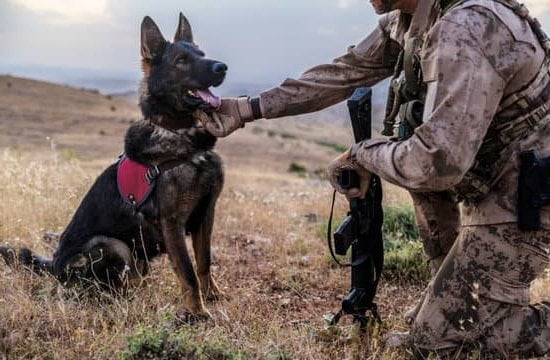Introduction
When it comes to training an aggressive dog, it is essential to first understand what could have caused the aggressive behavior in the first place. There are several possible underlying factors that can lead a dog to become aggressive; typically, they are related to lack of exposure and socialization when young, fear of other animals or unfamiliar people and environments, a misinterpretation of human interactions, pain or illness, boredom or lack of physical activity, dominance issues or recent changes in routine such as a new owner or living situation. It is important to recognize the signs of canine aggression so that appropriate steps can be taken to train the animal properly and help them overcome their behavioral issues.
In addition to speaking with a professional trainer and having your dog medically examined for any health related causes of aggression, here are several tips for safely training an aggressive dog:
1. Establish yourself as the Alpha. Dogs are social creatures and crave structure with clear boundaries for who has control – this should always be you! Start by bringing your dog on leash in outdoor locations that offer minimal distractions. During these sessions establish yourself as the leader by taking them through commands like sit/stay/come that require obedience from your pet. Avoid enforcing punishment based tactics and instead use rewards-based reinforcement like treats when they complete these exercises correctly.
2. Be consistent with commands/correction. You should always keep your verbal cues consistent during training sessions and never confuse your pet with different words each time – this will just make them confused on what you expect from them! If corrections need to be made, follow this up with immediate action when applicable – don’t allow bad behaviour go unnoticed as this sends a strong message about what is allowed and what isn’t tolerated in certain situations.
3. Create positive associations with ‘scary’ things like planes overhead or other dogs passing by on walks – This requires lots of patience but can do wonders in helping dogs cope better when faced with very scary situations that they would otherwise overreact to! You’ll need to start introducing them slowly watching out for signs where their anxiety level increases so you know where to adjust accordingly before simply flooding their senses too quickly – it might take time but eventually they will form positive connections between themselves and external stimuli instead of associating fear with every new encounter!
4. Learn body language signs that indicate discomfort or aggression– Pay attention closely to how your dog behaves around other people/animals while also watching carefully over their body language (tail tucking away, lip licking etc.) which often provide valuable clues about how stressed out they actually feel deep inside even if outwardly calm – then take corrective action if needed immediately without delay!
Identifying the Behavior
When it comes to dealing with an aggressive dog, it’s important to first identify the type of aggression and posturing your pup is displaying. Common types of aggression and posturing are fear-based aggression, resource guarding, redirected aggression and status-seeking aggression.
Fear-based aggression typically occurs when a dog attempts to escape or drive away what he perceives as a threat, usually through growling, snapping or biting. This type of aggression is often seen in rescue dogs who were scared or mistreated in the past. It’s important that you show your pup patience and understanding while using positive reinforcement training techniques such as reward based treats and playtime as a way to encourage better behavior.
Resource guarding is when a dog displays threatens other pets or people when they come near his possessions, such as food bowls, toys or beds. Many times this type of person starts behaving aggressively because he wants all these items for himself. To handle this type of aggression adequately you’ll need to desensitize your pet so that he learns being around other things doesn’t have to result in aggressive behavior all the time. You can do this by teaching him commands like “drop” and “leave it” which he needs to obey before getting his beloved possession back from you.
Redirected aggression occurs when a dog redirects pain or fear onto another animal or human after being frightened by something else. For example if loud noises occur outside the house causing fear in your pet then he might redirect that fear against someone standing nearby him such as yourself or another animal companion in the household . To reduce redirected aggression it’s important that you teach your pup to look away from whatever perceived danger is upsetting him through obedience cues like “look away” then rewarding him with treats for following this command properly instead of attempting to aggress towards others out of fear.
Last but not least we have status-seeking behavior where your pup feels the need to dominate other animals present , including humans ,and use any means necessary (barking, snarling) to make sure everyone else knows just how tough they are! As with all types of aggressive behavior you should practice ignoring negative posturing encouraging positive behaviors like sitting quietly creating more peaceable environment while providing plenty rewards praise playtime keep them from reverting back bad habits .
Intervention Techniques
De-escalation techniques involve teaching your dog to respond differently when they become overly excited or aggressive. This may include having them pause and ‘reset’ after becoming anxious, redirecting their unwanted behaviors by providing them with a reward of different activities instead, and teaching them calming signals to prevent any escalation of aggression. Redirecting unwanted behavior should be done in a safe environment where the dog is far away from anyone or anything that could anger it. With consistent practice, these skills can be taught so that your dog will be able to correctly identify new triggers and calmly approach objects that they were previously aggressive towards. Additionally, positive reinforcement with treats may help dogs during the training as this reinforces desirable behaviors. Appropriate socialization should also take place in order for dogs to learn how to properly interact and engage with other animals and humans. Including appropriate exposure to new environments and people is key in helping an aggressive dog become comfortable around unfamiliar faces.
Consistency is Key
When it comes to dealing with an aggressive dog, consistency is key in the long run if you want effective results and training. In order to modify the negative behaviors, start by setting up a structured routine that will be followed every day. Using positive reinforcement techniques, reward desirable behavior with treats, verbal praise and petting. Reinforcement of all stray positive characteristics will help to teach the dog which attributes it should focus on maintaining.
Conversely, punishing any bad behaviors is also essential in teaching boundaries and respect for commands. Whenever the dog violates said rules or acts out in an aggressive way, use a firm no or quiet squirt from a water bottle as a reminder that the behavior is unacceptable. It’s important to remain consistent during these moments so your pup can understand what’s expected of them.
Enlisting help from professional trainers can also be beneficial for difficult dogs since they have extensive experience in handling problem pets. They will be able to provide advice on which specific tactics work best for diffusing tension and encouraging good behavior from dogs displaying aggression problems. Additionally, there are online resources available for do-it-yourselfers who wish to take matters into their own hands when tackling stubborn pooches; just remember that going this route requires dedication and care to ensure the safety of both yourself and your canine friend.
Establishing Boundaries
Establishing boundaries is the first step towards training an aggressive dog. These boundaries should be applied consistently with clear, firm and fair methods that let your dog know which behaviors are acceptable, and which are not. It’s essential to provide your aggressive dog with a structured environment that clearly communicates expectations to reduce potential triggers of aggression.
For example, creating dedicated “safe zones” in your house for your aggressive dog to retreat to will reduce anxiety caused by stimuli like other pets or visitors. If you can identify patterns in problem behavior such as barking or growling when company arrives, set up boundary lines or physical barriers (such as chair blocking off the entrance) to discourage the reaction. You can also implement certain rules within your home such as not entering certain spaces or not allowing certain people into their personal space if need be. This can help teach the dog that their space is respected and any threat will be met with appropriate action from you.
Overall, setting boundaries helps reinforce desirable behavior while also making sure that any potentially dangerous reactions are reduced by establishing clear expectations and environments when interacting with people and other pets. With patience and consistency, these boundaries eventually become instinctive for aggressive dogs making them more settled and in control of their own emotions within a stable and safe environment.
Reinforcement
Dog aggression often develops as a result of stress or fear. By providing positive reinforcement, you can teach aggressive dogs in a way that works with their individual needs and rehabilitates them in the safest manner possible. To make sure reinforcement encourages positive behavior, it should be timed properly and consist of rewards that will encourage future calm responses.
There are several different reward systems that can be used with an aggressive dog to foster good behaviors. One of the most commonly used reward systems is Classical Conditioning, which operates on the belief that behaviors increase when they’re paired with desirable rewards. This type of conditioning focuses on instruction paired with reward for any desired behavior rather than punishing undesired ones. For instance, if you want your dog to obey certain commands such as “sit” or “down”, you can give them treats whenever they perform these behaviors correctly. In this case, treats become associated with desired behaviors so that your dog learns faster and responds more reliably over time. Another popular system is Operant Conditioning which uses associations between particular stimuli—like a spoken command—and a specific action; this includes rewarding good behavior while ignoring negative behavior. This type of conditioning has the potential to produce rapid change in animal behavior since the reward follows immediately upon completion of an action rather than at some point later in time.
By understanding various reward systems and being able to apply them correctly to your situation, training an aggressive dog can be done safely and effectively. Proper reinforcement should always be used so that detrimental behaviors are not accidentally reinforced instead of desired ones; incorrect application could even cause additional fear-based aggression and make progress harder to achieve. With patience and knowledge, however, many dogs can benefit immensely from learning through reward-based methods and eventually learn how to respond appropriately in difficult situations without resorting to aggressive behavior again .
Decompression
Decompression is an important part of training an aggressive dog. Lowering stress and promoting relaxation are key components to helping calm their emotions and working on behavioral issues. Exercise is one way to provide decompression and it can take many forms like a walk or jog, or activity such as fetch or agility training. You want to find activities that challenge both the mind and body while still being doable. This can include things like problem solving games, obstacle courses, and obedience drills. Additionally, managing exposure to other dogs is important when training an aggressive dog; try alternating between solo play time at the park and structured time with other pups for supervision. The goal is to achieve desensitization in order to modify the aggression you may be seeing from your pup. When done correctly, exercise-based decompression has been found to promote good mental health in our canine pals!
Managing Stressors
When training an aggressive dog, it is important to identify and manage potentially stressful situations that may arise in order to minimize the likelihood of an aggressive outburst. If unfamiliar people, or other dogs, are expected to be around the dog, it can be helpful to provide as much calming and positive reinforcement as possible when introducing them. Timing is important; do not let the dog become overly excited or downplay any potential threats. Provide appropriate physical boundaries by using leashes and muzzles if needed. Move the dog away from a situation before it has a chance to become overly aroused.
Providing Timeouts: Providing Appropriate Timeouts
It can also be beneficial to provide timeouts for aggressive outbursts. These timeouts should occur in a separate room with minimal distraction, providing the dog with time to calm down on their own without pressure or human intervention. This helps give the pet space while they learn how to cope with stress without any reinforcement on negative behavior.
Utilizing Socialization: Socializing an Aggressive Dog
Proper socialization is also important when attempting to train an aggressive dog in order for them to interact appropriately with people and other animals alike. Start small by introducing them slowly in low-stress environments such as parks or quiet streets; this way you can create positive experiences for your pet where he will see people and other animals as friendly rather than intimidating or hostile beings. Here you can teach him simple commands like sit and stay so he can be comfortable around new people and animals before being asked to do more complex tasks around strangers.
Rewards are Essential
Rewards are an incredibly important part of training an aggressive dog. Positive reinforcement can help your pup learn proper behaviors, bonding exercises, and alleviate some of their bad habits. Plus, it’s incredibly pups to have fun while they’re learning. So when devising a plan for training an aggressive dog, make sure rewards hold a prominent place in the equation.
Rewards don’t have to take the form of food either – depending on the type and severity of aggression, you may instead be able to use toys or playtime as reward for good behavior. This helps build trust between you and your pup. It also gives them something soothing and enjoyable to do as part of their training process; this reinforces good behaviors rather than simply punishing bad habits (which without the proper guidance, can only make matters worse).
When establishing rewards for your dog’s good behavior, start off small by offering things like brief petting sessions or verbal praise then slowly increase the “payment.” This can include expanding upon reward playtime with fetch, hide-and-seek activities, or other interactive and engaging games that involve three-dimensional thinking and commands versus one-dimensional responses (like a command followed by compliance). Doing so comes with its own set of positive rewards and instills confidence in naturally anxious or fearful dogs who may be more prone to displaying acts of aggression.
Conclusion
Training an aggressive dog can be a challenging process, but with the right methods and techniques, results can come in time. It is essential to remain positive when training an aggressive dog, so that you create a strong bond and prevent any further aggression. Additionally, consistency is key in their training; your dog should constantly be reminded of the expectations that have been set through clear commands and leading by example. By correcting unwanted behaviors and positively rewarding good behaviors throughout their training, your aggressive dog will soon learn to respond accordingly. This will enable them to feel more comfortable in many different situations and build trust with you as their owner. With a consistent and positive approach to training, an aggressive dog can learn how to respond calmly in new environments.

Welcome to the blog! I am a professional dog trainer and have been working with dogs for many years. In this blog, I will be discussing various topics related to dog training, including tips, tricks, and advice. I hope you find this information helpful and informative. Thanks for reading!





